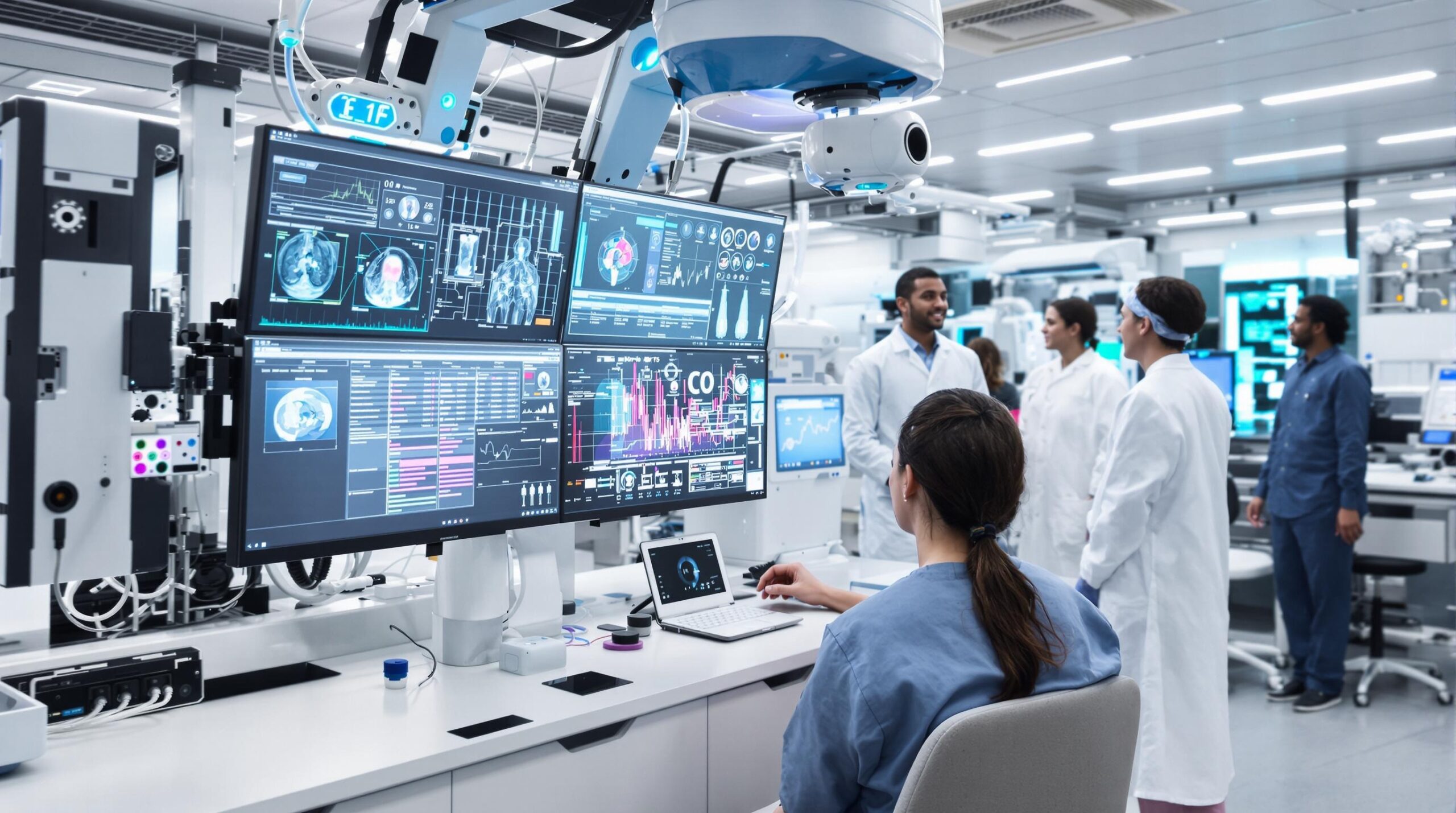Advancements in artificial intelligence (AI) are transforming the medical landscape. AI-powered diagnostics are enabling healthcare systems to detect diseases at much earlier stages. This technological leap brings new hope to patients and clinicians, reshaping how diseases are identified and managed.
How AI Diagnostics Work
AI diagnostics use complex algorithms to analyze medical data. These algorithms process vast amounts of information from medical images, lab results, and patient histories. Machine learning models learn from extensive datasets, refining their ability to recognize patterns linked to specific diseases.
Deep learning techniques, especially convolutional neural networks, excel at interpreting visual data like X-rays and MRI scans. By evaluating countless images, these models identify subtle disease markers that a human eye might miss. The result is improved diagnostic accuracy and earlier disease detection.
The Importance of Early Disease Detection
Detecting diseases early greatly improves treatment options and patient outcomes. Many life-threatening conditions, such as cancer or heart disease, develop slowly over time. These diseases are usually easier to treat or manage if caught in their initial phases.
Traditional diagnostic methods sometimes overlook early symptoms because they are subtle and easily missed. AI algorithms excel at recognizing patterns that indicate the beginning stages of illness. As a result, patients gain access to timely interventions and higher survival rates.
Benefits of AI Over Traditional Diagnostics
AI-powered diagnostics offer several advantages compared to conventional methods. Machine learning models process and interpret vast quantities of medical data in seconds. This speed enables clinicians to reach faster and potentially more accurate diagnoses.
Another benefit is consistency, as AI systems eliminate human errors influenced by fatigue or oversight. Unlike individual doctors, these algorithms do not vary their performance based on external factors. Additionally, AI continuously learns and improves, enhancing its diagnostic capabilities.
Applications in Different Medical Fields
Oncology
AI-powered tools have enormous benefits for cancer detection and diagnosis. Algorithms can spot abnormalities in mammograms, Pap smears, and dermatological images. These AI tools often find tumors or signs of malignancy earlier than human clinicians, offering a better chance for successful treatment.
Cardiology
Cardiologists use AI to interpret electrocardiograms and echocardiograms. Algorithms accurately identify irregular heart rhythms, blockages, or structural abnormalities. Early detection of heart disease can prevent serious complications, such as heart attacks and heart failure.
Ophthalmology
AI-based analysis of retinal images helps spot conditions like diabetic retinopathy or glaucoma early. These technologies improve access to vision care in remote and underserved areas. Consequently, patients can receive sight-saving treatment before irreversible damage occurs.
Pathology and Infectious Diseases
Pathologists use AI to examine tissue samples for abnormal cell growth. Automated systems also analyze laboratory results to identify infections or emerging disease outbreaks. Fast and accurate diagnostics can help public health officials contain epidemics quickly.
Integration With Clinical Workflows
For AI diagnostics to achieve widespread use, they must integrate smoothly with existing medical practices. Many hospitals are beginning to embed AI tools into their electronic health record (EHR) systems. This collaboration enables doctors to receive diagnostic suggestions directly while reviewing patient information.
AI systems are supportive tools that enhance, rather than replace, clinical decision-making. Physicians use these recommendations to confirm their findings and reduce diagnostic uncertainty. This collaborative approach streamlines patient care pathways and increases confidence in diagnosis.
Challenges Facing AI Diagnostics
Despite AI’s promise, several obstacles must be overcome before widespread adoption. High-quality, diverse data are essential to training effective diagnostic models. However, medical data often suffers from inconsistencies, privacy concerns, and limited availability.
Bias in AI algorithms presents another challenge. If training data lack representation from different populations, diagnostic accuracy can vary by patient group. Researchers are working to diversify datasets and enhance algorithm transparency to address this.
Regulatory approval remains a significant hurdle as well. Health authorities must verify that AI tools are safe and effective before they reach clinics. Continuous monitoring and validation are essential to ensure ongoing reliability and patient safety.
The Future of AI in Early Disease Detection
The future of AI-powered diagnostics looks promising as technology and medicine converge. Ongoing research focuses on expanding AI applications across new specialties and disease types. Data sharing agreements will enable algorithms to learn from global datasets, boosting accuracy for all patient groups.
Additionally, advances in explainable AI are making diagnostic tools more transparent for clinicians and patients. Understanding how an AI reached its conclusion builds trust and supports better-informed decisions. Moreover, as devices become smaller and more portable, AI diagnostics may eventually be used in community clinics and homes.
Conclusion
AI-powered diagnostics are transforming disease detection and patient care. By harnessing large data volumes, these technologies uncover patterns that unlock earlier diagnosis. As integration improves and challenges are addressed, AI is set to play an even bigger role in healthcare.
Early detection can significantly improve disease outcomes and reduce overall healthcare costs. Hospitals and clinics that adopt AI diagnostics now are paving the way toward a healthier, more efficient future for medicine.


